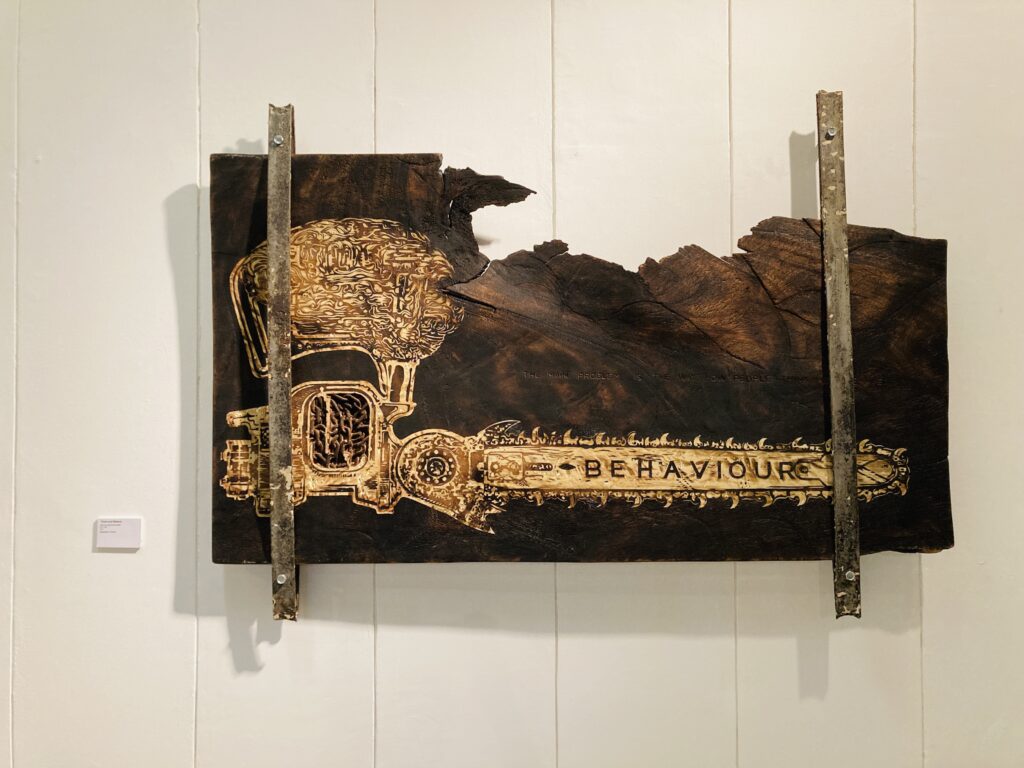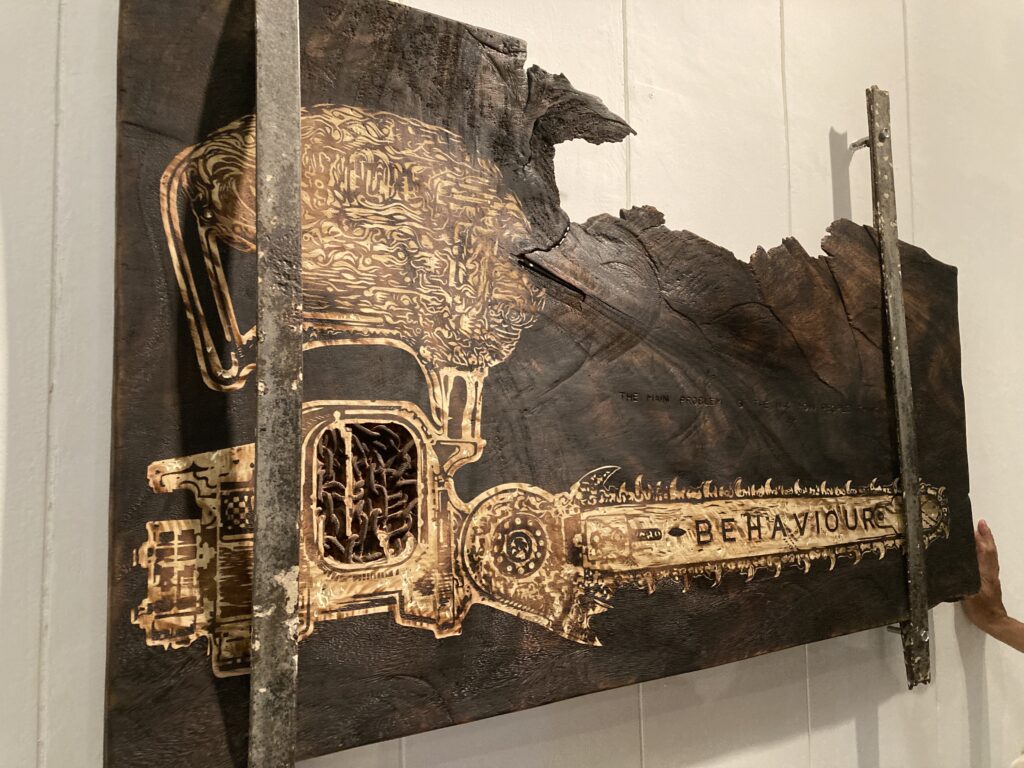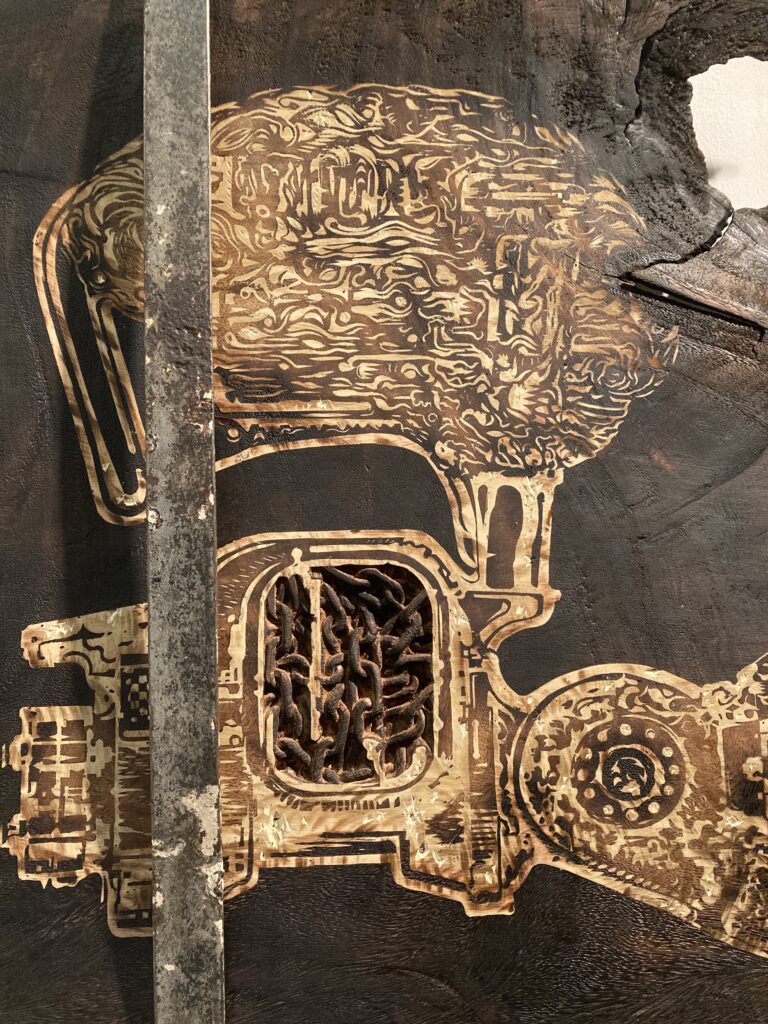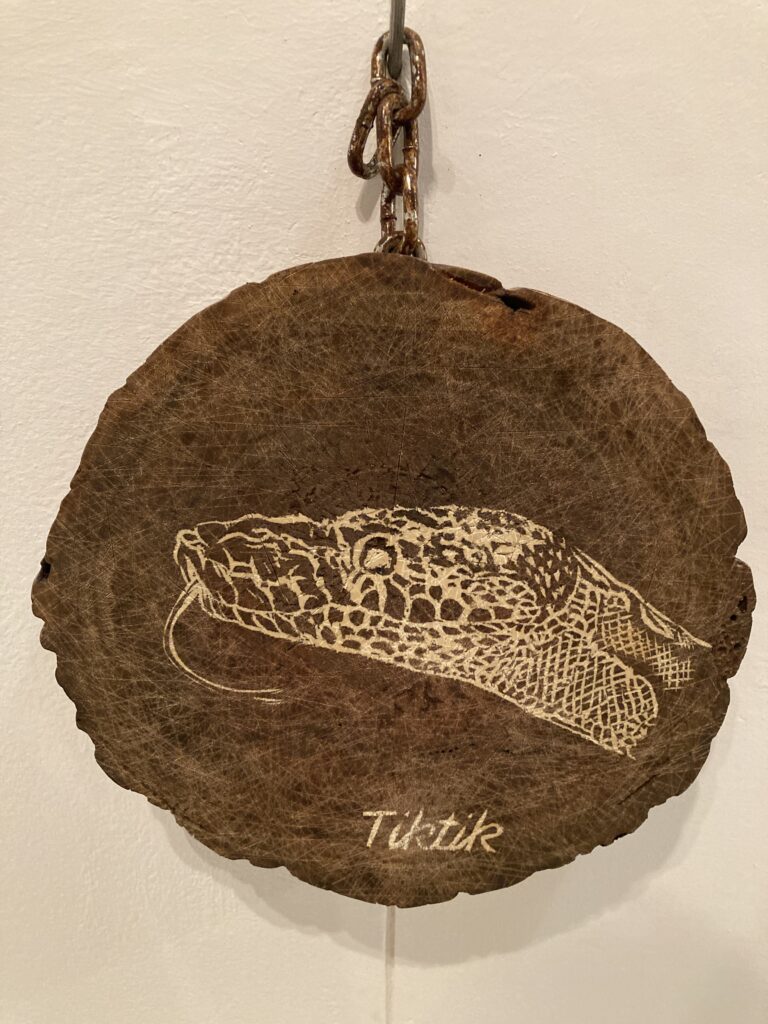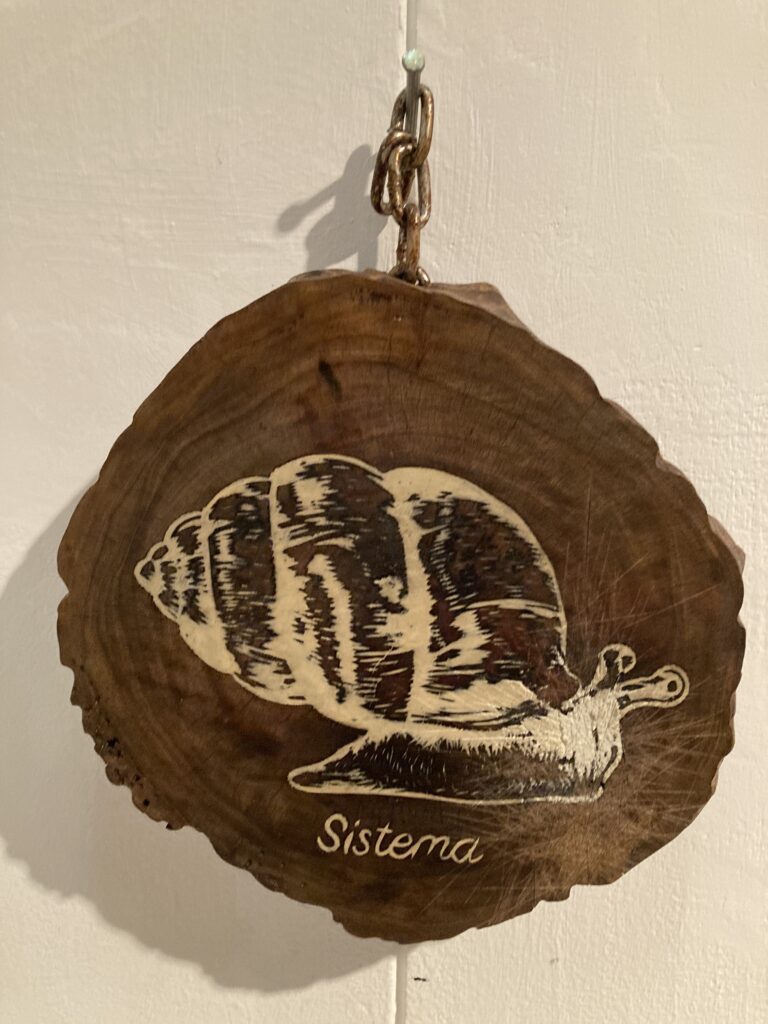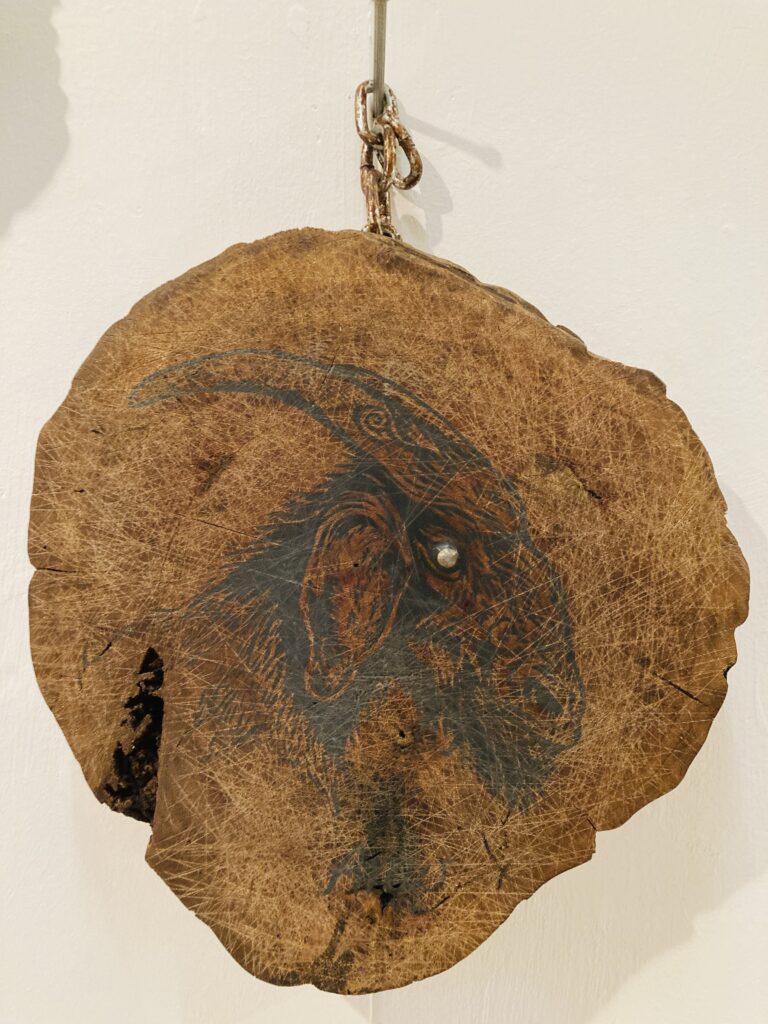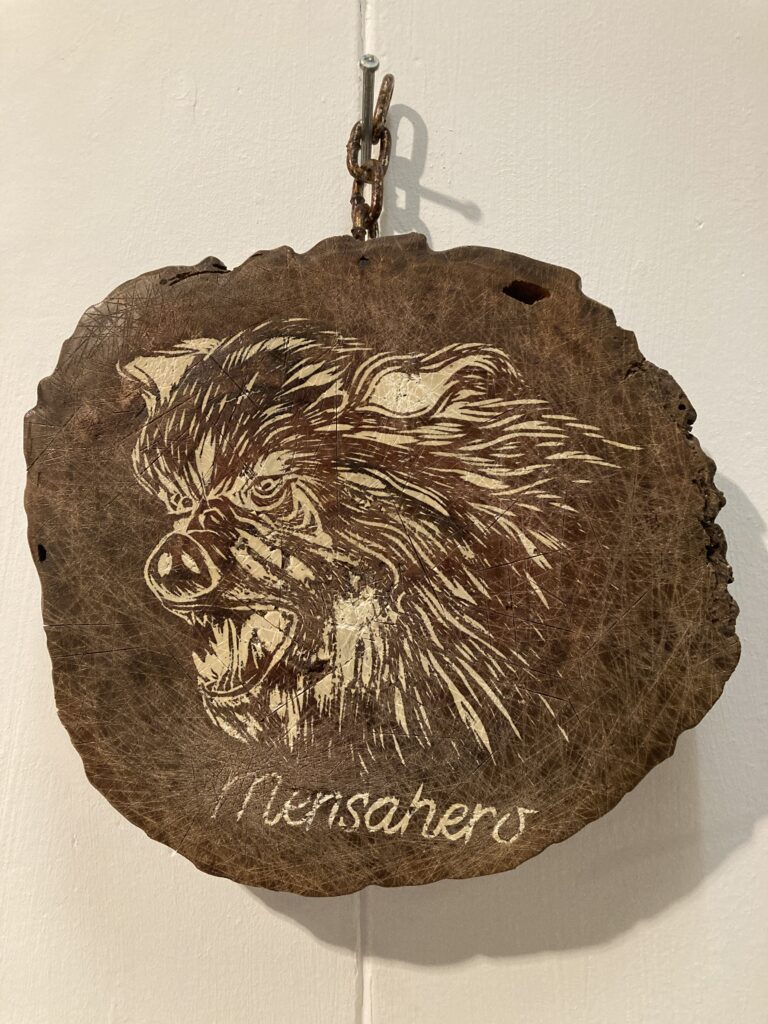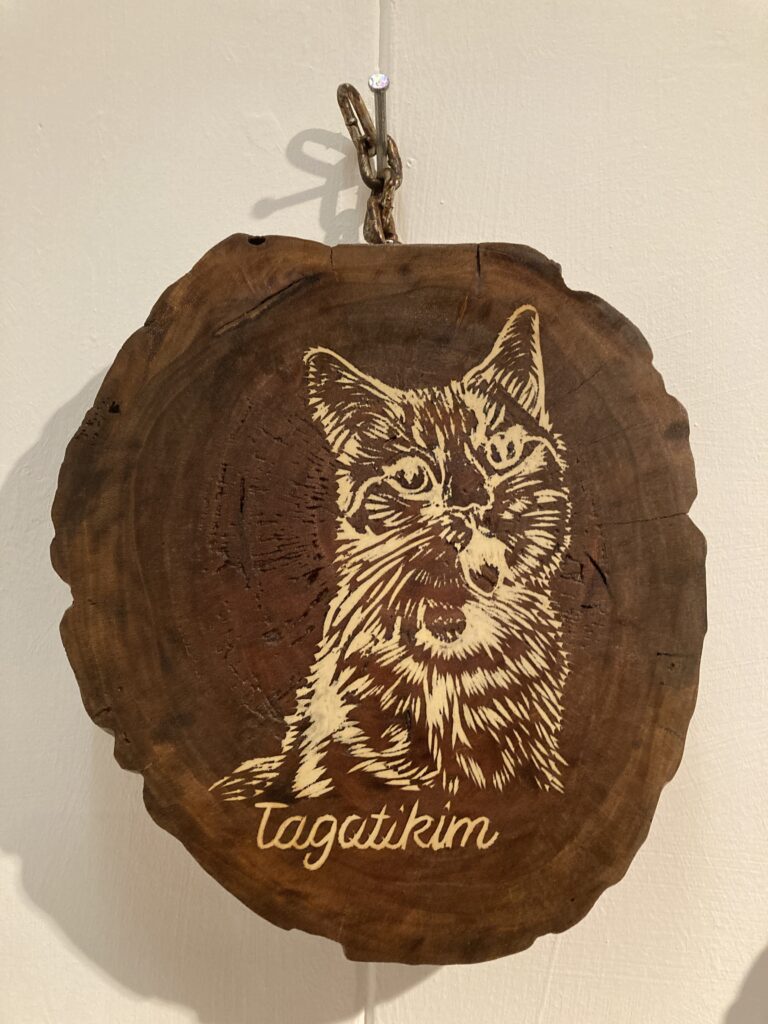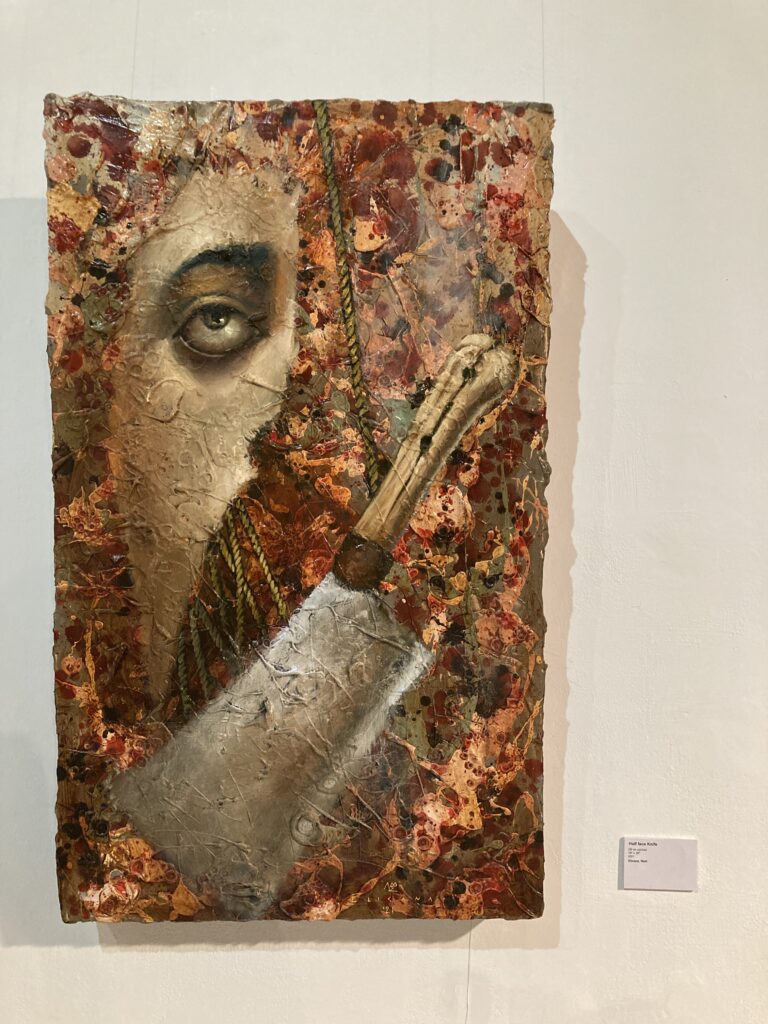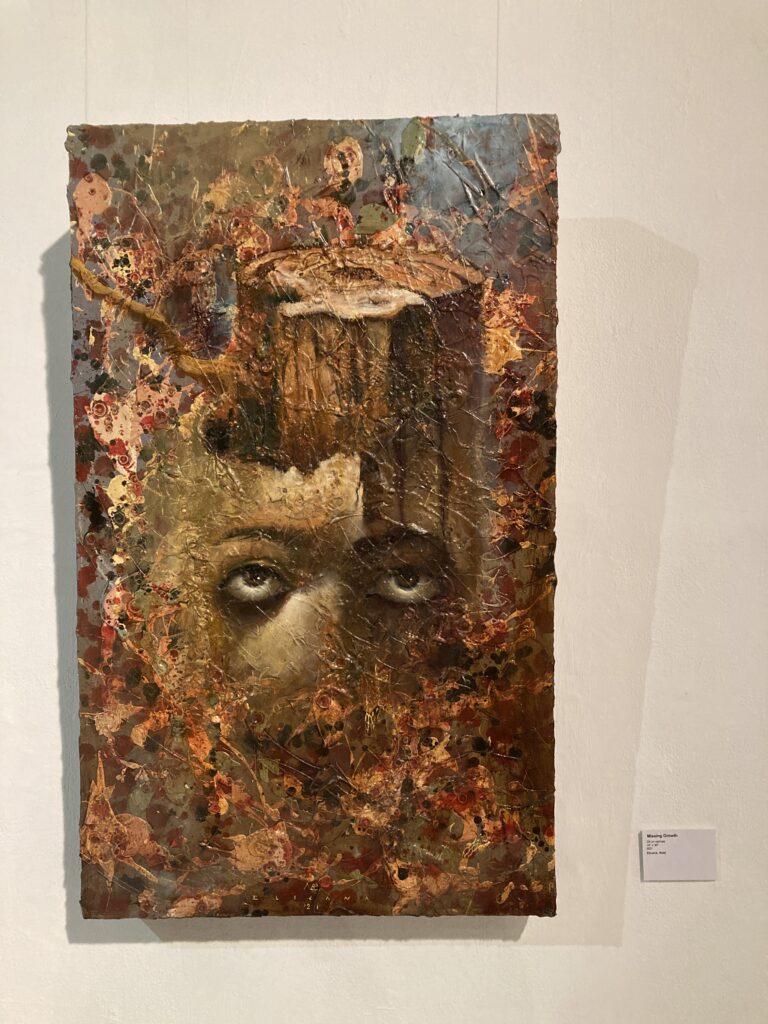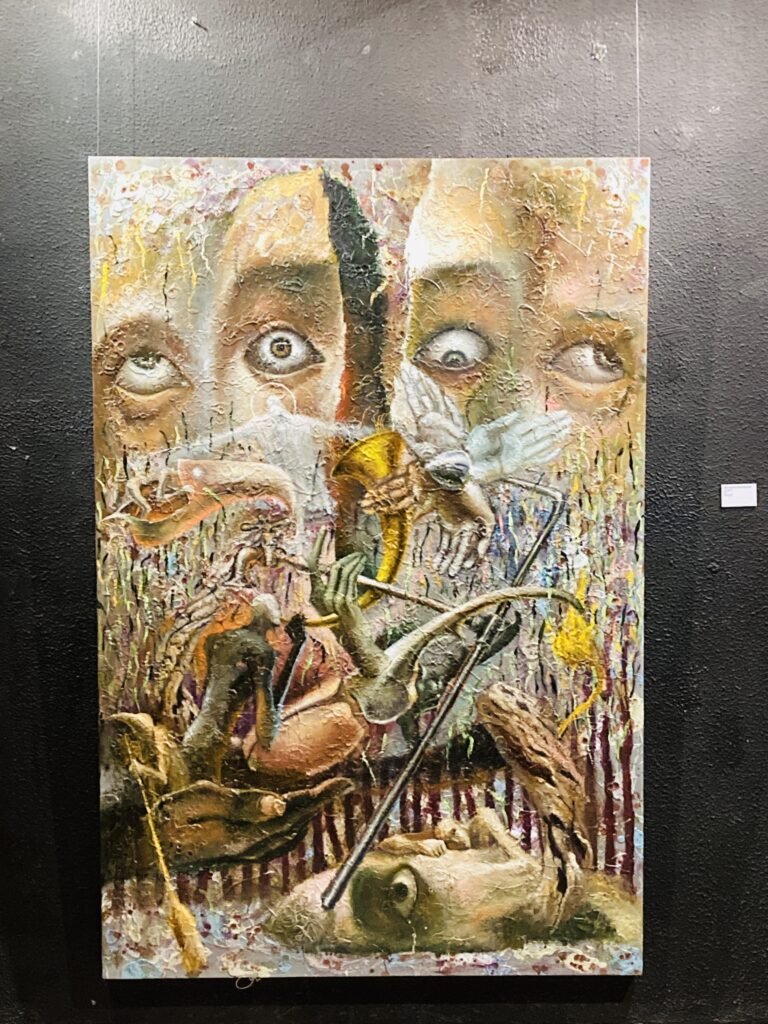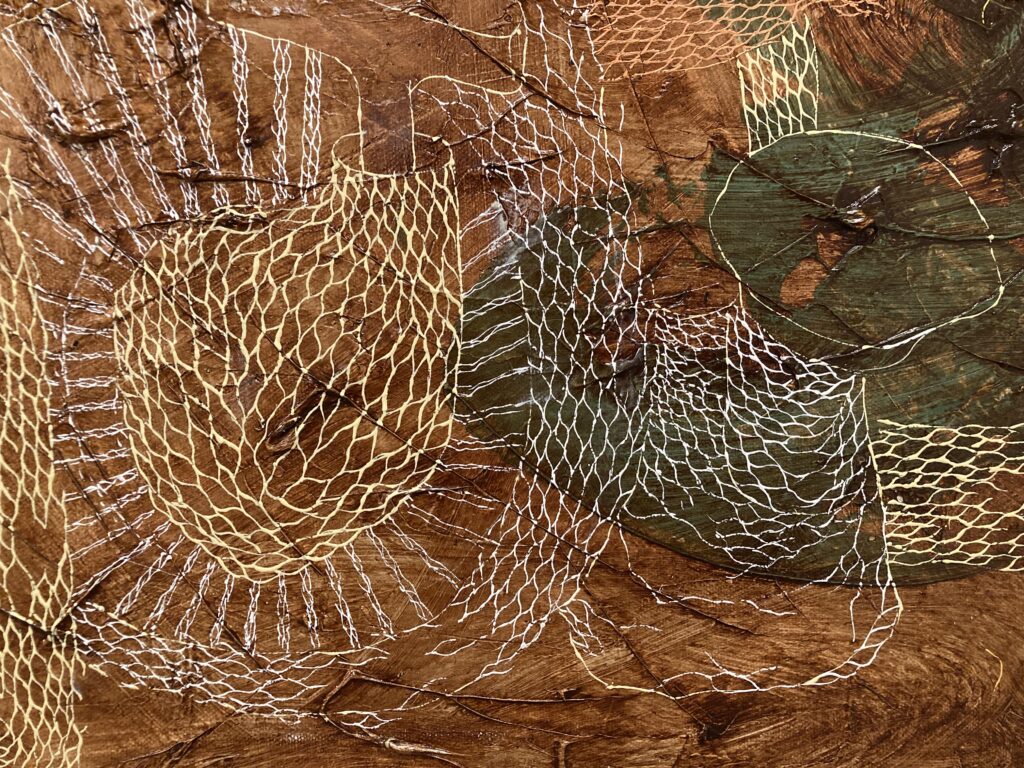Double Dead is a two-person exhibition of a painter and a sculptor, one inspired by imagination and the other is driven by material. Noel Elicana is a product of art contests, whose paintings are cryptic collages of what the artist says are his personal myths. While Tyrone Espinosa is molded by the craftsmanship that he developed growing up surrounded by woodcarvers. The artworks in this exhibition are harmonized by the earthy hues: organic from wood and simulated from oil paint. Both artists also used the environment as a metaphor for the self, placing personalization in the different objects they presented.
In this exhibition, Tyrone Espinosa experiments on inlays, a technique he observed from old furniture. Inlays are created by carving a pattern or an outline of an image on the surface of the wood and inserting another material with contrasting colors. This woodworking technique started in the 17th century in Europe and is also found in antique Filipino tables, baul, and comoda. Traditionally, bones and pearls are used as inlays. However, in his artworks, Espinosa uses resin because of its availability.
Think And Behave is a huge hunk of wood with the largest inlay among Espinosa’s works in this exhibition. On the surface of the wood, the artist carved a chainsaw, perhaps a mark to remind the viewer of the state of becoming and unbecoming. A curious addition to the chainsaw is the text “behaviour” carved on its blade. From the museum’s notes, Espinosa says “the main problem is how people think and behave”.
Espinosa also explored creating inlays of animal drawings on blocks of woods that resemble the tapalan or chopping board usually found in kitchens and slaughterhouses in rural areas. Because the colors of wood vary, Espinosa uses dark-colored inlays on light-colored wood and bright inlays on dark-colored wood. All fifteen artworks in this series are marks of the artist getting to know his material.
Gomburza gives the audience a peek at Espinosa’s old works, a testament of his mastery of carving from wood. This bas relief is a tribute to the heroes, Mariano Gomez, José Burgos, and Jacinto Zamora who were executed via garrote for treason and sedition in 1872. The sculpture towers over the audience at six feet. On pieces of wood that resemble the cross, the artist painstakingly carved three human figures bound by chains. The artwork screams tumult, tension, and liberation.
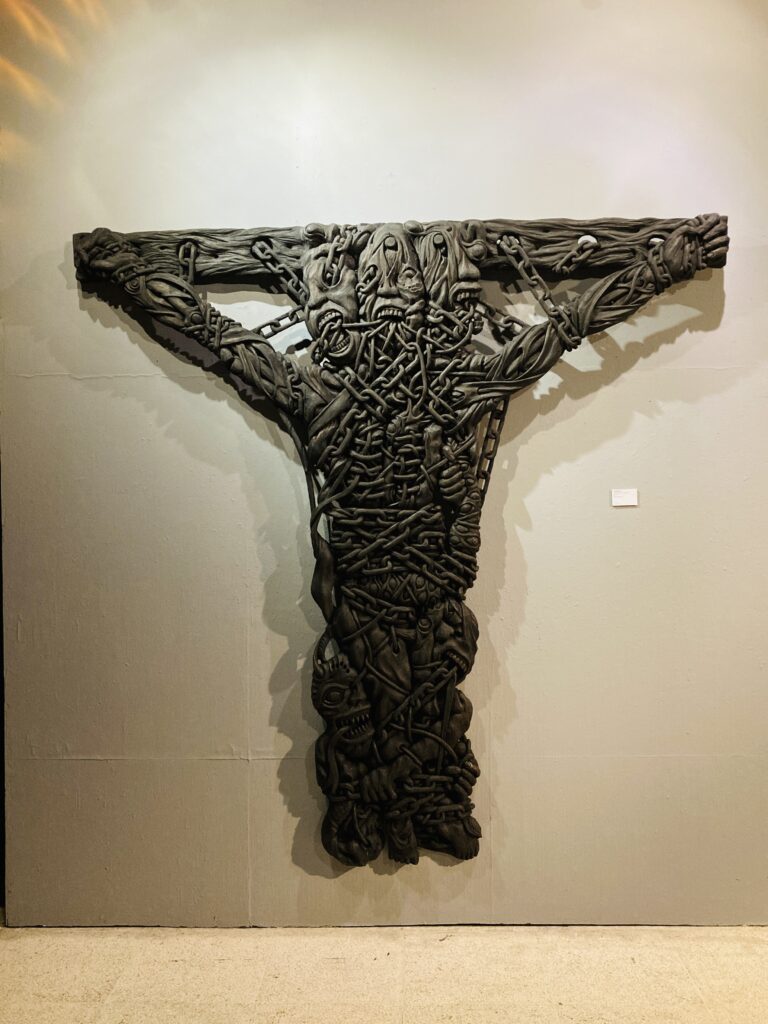
The other half of this exhibition are paintings from Noel Elicana. As a competition regular, Elicana is perhaps driven by compositions that are aimed to capture the attention of judges. Recurring in his paintings are representations of eyes, with lids wide apart in an exaggeration of wakefulness. Each painting focuses on the eyes against the backdrop of what the artist says are themes inspired by the social realism movement.
In Missing Growth, Elicana attempts to inject social realist ideals in his artworks by painting a tree stump growing above a human head to signify illegal logging. Based on the museum’s notes, Elicana also intended for the trees to be a metaphor for an individual’s growth, the self perhaps. The same composition can be observed in Coffee Time, Left-overs, and Half-Face Knife where the images feature a bird, a butcher knife, and the artist seemingly inserting himself in these artworks as the eyes.
What was the winning element of Noel Elicana’s earlier artworks is the attention he gave to each of the icons he places on his paintings while telling stories about his family and his struggles. In Double Dead, Elicana threads the dangerous territory of charging his artworks with social themes. Perhaps, Elicana aims to tell stories beyond his personal issues and discuss the context where he wants his works to be placed.
